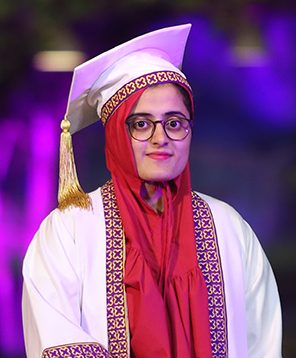
HUSSAINA ALI AKBAR
Aspiration Statement
Considering my experience in automation, deep learning, image processing, event management, and creating opportunities for women, I aspire to venture into the computer vision industry to invent and innovate the latest technology.
Core Skills
- Python, C++
- MATLAB, Simulink
- PSpice
- Arduino, Raspberry PI
- LabView
Experience
Leadership / Meta-curricular
- Women in Tech (WiT) Karachi Chapter of Microsoft Student Partner - Part of Event Management Team
- University in IFTP (Invent for the Planet) Competition, arranged by Texas A&M University (Feb, 2020) - Second Runner up
- Women in Science and Engineering (WiSE) club (2019 – 2020) - Treasurer
- Sindh Institute of Urology and Transplantation (June 2014) - Volunteered
- Participaant in NERC’19 at National University of Science and Technology (NUST) (July, 2019)
Internship / Volunteer Work
- Institute of Space Technology - AI Research Intern
- Islamabad Institute of Space Technology - Internship
Publications / Creative Projects
- Home automation system using Raspberry Pi microcontroller.
- Counterfeit IC detection using Siamese neural network after applying BLP kernel on dataset images.
- Automatic Emergency Light Circuit.
- Object following DC Servo project, using OpenCv in Python for object identification and mapping, and Arduino software for self-built DC Servo motor.
Final Year Project
Project Title
Artificial Neural Network & Deep Learning Based Design of Nanophotonic Structures
Description
This project aims to employ the concepts of artificial neural networks and deep learning for nanophotonic design and optimization. The aim of the project is to extract detailed information regarding the role of nanophotonic design parameters in determining the output response of a nanophotonic structure under consideration. Moreover, the project also aims to provide an intuitive understanding of the physics involved in the light-matter interaction in the nanophotonic structures without imposing any severe computation complexity.